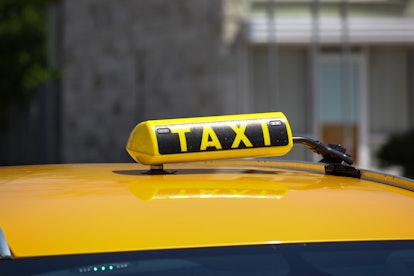7 Uber and Lyft alternatives: Taxi, cab, and other ride-hailing apps that are just as easy to use
As increasingly more people emerge from their homes, vaccinated and ready to make up for lost time, they’re naturally turning to ride-sharing apps to get around — ideally in hopes of cheap rides. But there’s a problem: Both Uber and Lyft are dealing with a major driver shortage. It’s not exactly surprising, given the facts that the pandemic caused work to dry up for many drivers — and both companies are notoriously worker-unfriendly, to say the least.
In the 2020 election, California passed Proposition 22, a ballot initiative written by lawyers funded by Uber, Lyft, and other gig economy companies that allows them to legally deny drivers minimum wage and benefits like paid sick leave. Now, in an attempt to meet rider demand, both companies are offering financial incentives to lure drivers back — but, as The Next Web reported, these offers don’t do anything to support current drivers or to ensure fair wages and working conditions long-term. As for how riders are impacted, the current shortage also means there’s a huge surge in fares for the rides that are available.
All that to say, there are certainly good reasons to avoid using both Uber and Lyft, whether you’re put off by the companies’ anti-labor tactics, the high prices, or you’re just tired of waiting so long for rides. But then, what do you do when you need cheap rides and can’t find a taxi? Here are some alternatives to the biggest ride-sharing apps.
Mục Lục
Arro
Arro is available in six cities: Boston, Chicago, Houston, Miami, New York City, and San Francisco, as well as London, UK. Unlike Uber and Lyft, which rely heavily on private drivers, Arro lets you hail (and pay for) an actual licensed taxi from your phone. Like traditional taxi services, Arro’s pricing is metered, so you don’t have to worry about surge pricing like you do with other ride-sharing apps (though the app does provide an estimated fare when you “E-Hail” from your phone). In some cases, you can use the app to schedule a taxi ride in advance, and you can use the “E-Pay” feature when you’re already in a cab that you hailed on the street.
Curb
Curb is available in 29 cities including Austin, Nashville, San Diego, and Seattle. It makes a point of using professional drivers in regular, metered taxi cabs — the drivers of which have also been hit hard by the pandemic. Curb also has a “Pair & Pay” option in Boston, Las Vegas, Miami, New York City, and Philadelphia that lets you pay via the app after hailing a taxi on the street.
 Nenov/Moment/Getty Images
Nenov/Moment/Getty Images
Alto
This brand-new addition to the rideshare landscape classifies all of its drivers as employees — which is exactly what Uber and Lyft have been avoiding at all costs — making them eligible for benefits that they can’t get from the rideshare giants. All of the drivers undergo training with the company, and they pick you up in luxury vehicles owned by Alto and cleaned between passengers — so you know what you’re getting when you request a ride. Because of this, prices are higher than the other services and wait times may be longer (they operate on 10-15 minute wait times), but you can purchase a membership to get a discount, priority access, and other perks. The app is currently available for pre-scheduled rides in Los Angeles, Dallas, and Forth Worth, with on-demand rides, personal shopping, and delivery services available in the latter two cities as well — though they do plan to expand to more cities.
Gett
If you’re traveling abroad, Gett may be one of your best options for ride-hailing. The company is geared primarily toward businesses, but you can still use it as an individual consumer as well — and the app consolidates rides from a variety of supply partners, so you can view plenty of options for vehicle, pricing, and more without having to switch apps. Bonus: In the U.K., every ride is carbon neutral. In the U.S. and Canada, Gett is only available through its partnership with Lyft — so while you can request a ride on the Gett app, you’ll actually be getting a Lyft.
Via
Via, which is currently available in the U.S. in New York City and Washington, D.C. (its Chicago service shut down during the pandemic), offers shared rides for lower fares than typical ride-hailing apps. Instead of being picked up and dropped off at your exact locations, you’ll be directed to a nearby corner (think: a couple blocks away) — making the whole shared ride process more efficient. The company also has partnerships with a few cities — including Los Angeles, Seattle, and Arlington, Va. — to offer “on-demand public transportation.”
 Mathias Fengler / EyeEm/EyeEm/Getty Images
Mathias Fengler / EyeEm/EyeEm/Getty Images
Wingz
Wingz started out specifically as an airport ride service, but it has since expanded into “around town” rides as well. In both cases, the app is unique by allowing you to pre-schedule rides (up to two months in advance) for a flat fare, which helps with both scheduling and budgeting. You can also avoid playing “driver roulette” by building a list of your favorite drivers in the app and only riding with those you trust. Wingz is currently available in a handful of U.S. cities in California, Florida, Oregon, Texas, and Washington — and they’re open to suggestions on where to go next.
The Drivers Cooperative
The Drivers Cooperative recently launched in New York City as a driver-owned rideshare service — another direct response to Uber and Lyft. With this app, all profits go to the drivers, and each driver owns one share of the company, according to Gizmodo.
This article was originally published on 1.30.2017















![Toni Kroos là ai? [ sự thật về tiểu sử đầy đủ Toni Kroos ]](https://evbn.org/wp-content/uploads/New-Project-6635-1671934592.jpg)


